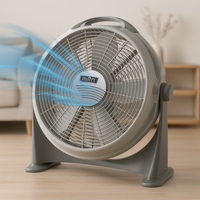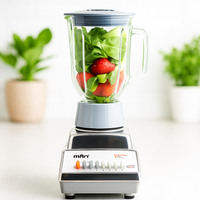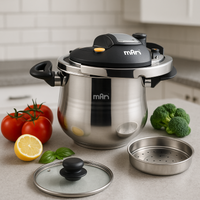
Between work, daily tasks, and tiredness, many people end up eating whatever they find or ordering fast food. However, there’s a practical, affordable, and healthy tool that can completely change the way you eat: meal prep.
Meal prep is the habit of planning, cooking, and storing your meals ahead of time to eat throughout the week. More than just a fitness trend, it’s a strategy for organization and self-care that helps you save time, money, and most importantly, stay in control of what you eat.
If your goal is to lose weight or maintain a balanced diet, meal prep is your best ally. It helps you manage portion sizes, balance your macros (proteins, carbs, and fats), and avoid impulsive choices that often ruin diets.
Up next, you’ll learn step-by-step how to use meal prep to reach your health goals easily and effectively.
What exactly is meal prep, and why does it work so well for losing weight?
Meal prep is the smart way to plan your meals. Instead of cooking every day, you pick one or two days a week to prepare your dishes in the right portions and store them in containers ready to heat and eat.
This method is based on three key pillars:
Planning: You decide what you’ll eat and how much.
Preparation: You cook everything in one block of time (batch cooking).
Organization: You store your meals in labeled containers, ready to enjoy.
Why does meal prep help with weight loss?
It prevents impulse eating: When your meals are ready, you’re less tempted to order fast food.
You control portions: By dividing your food precisely, you know exactly how much you’re eating.
You keep your macros balanced: You can distribute your proteins, carbs, and fats according to your goals.
It helps you stick to your eating plan: It’s easier to stay consistent when everything is organized.
It reduces daily stress: You no longer have to ask yourself, “What am I going to eat today?”
Meal prep turns healthy eating into a sustainable habit—not just a temporary diet.
The Role of Portion Control in Meal Prep Success
One of the most common mistakes when trying to lose weight is not knowing how much you’re actually eating. Even healthy foods can lead to weight gain if the portions are too big.
Meal prep makes portion control easier because each meal is prepared with exact measurements.
For example, you can use:
A digital scale to weigh proteins and carbs.
Measuring cups for cereals, rice, or oats.
Divided containers to separate each food group.
By seeing your portions already served, your brain learns to recognize the right amounts, improving your relationship with food and helping you avoid overeating.
Use containers of the same size to make visual portioning easier. Over time, you’ll be able to recognize your ideal portions without needing to measure every ingredient.
Understanding Macros: The Key to a Balanced Meal Prep
Macronutrients (or “macros”) are the three main pillars of your diet: proteins, carbohydrates, and fats.
Each one plays an essential role in your body, and finding the right balance between them is the key to a successful meal prep plan.
Proteins
They help build muscle, keep you full, and boost your metabolism.
Recommended sources:
Chicken, turkey, fish, eggs, tofu, lentils, egg whites, and protein powder.
Carbohydrates
They’re your main source of energy. Choose complex carbs that digest slowly.
Recommended sources:
Oats, brown rice, sweet potatoes, beans, and vegetables.
Healthy Fats
They regulate hormones, protect your organs, and help your body absorb vitamins.
Recommended sources:
Avocado, olive oil, nuts, chia seeds, and flaxseeds.
A common macro ratio for weight loss could be:
40% protein
30% carbohydrates
30% healthy fats
However, every body is different. Adjust your macros based on your needs, activity level, and goals.
How to Plan Your Meal Prep Step by Step
Set your goals
Do you want to lose weight, maintain it, or build muscle? This will determine your portions and macros.
Pick a prep day
Sunday or Monday usually work best since you have more free time. Some people do a second prep midweek to keep their food fresh.
Create your weekly menu
Choose simple, balanced recipes that are easy to store.
Example:
Breakfast: Oatmeal with protein and fruit.
Lunch: Baked chicken with rice and vegetables.
Dinner: Salad with tuna, boiled egg, and avocado.
Snacks: Nuts, Greek yogurt, etc.
Shop with a smart list
Write down all the ingredients you’ll need. This helps avoid impulse buys and reduces food waste.
Cook in batches
Save time by cooking several items at once — bake your proteins, cook rice or whole-grain pasta, and roast vegetables in bulk.
Divide into portions
Use individual containers for each meal. That way, you just need to open, heat, and enjoy.
Store properly
Keep your meals in the fridge for up to 4 days. If you prep for longer, freeze some portions to keep them fresh.
Example of a One-Week Meal Prep for Weight Loss
|
Day |
Breakfast |
Lunch |
Dinner |
Snack |
|
Monday |
Greek yogurt with oats |
Baked chicken with brown rice |
Tuna salad |
Almonds |
|
Tuesday |
green smoothie |
Steamed salmon with rice |
Chicken lettuce tacos |
Apple |
|
Wednesday |
Veggie omelet |
Turkey meatballs |
Lentil soup |
Greek yogurt |
|
Thursday |
Whole-grain bread with avocado |
Chicken breast with sweet potato |
Chickpea salad |
Chopped fruit |
|
Friday |
Oatmeal with berries |
Fish fillet with salad |
Tuna wrap |
Homemade popcorn (light on salt) |
Practical Tips to Improve Your Meal Prep Routine
Invest in glass or BPA-free containers. They last longer, are safer, and are easy to clean.
Label your meals. Write the day and type of meal using tape or a dry-erase marker.
Use spices and herbs. They help you switch up flavors without adding extra calories.
Freeze extra portions. Perfect for those busy days.
Wash your fruits and veggies as soon as you buy them. That way they’re ready to use.
Keep your fridge organized. Separate cooked food from raw ingredients.
Switch it up weekly. Change your recipes every week to avoid getting bored.
Stay hydrated. Carry a reusable water bottle—meal prep also means taking care of your water intake.
Common Meal Prep Mistakes (and How to Avoid Them)
Making portions that are too big.
Solution: use measuring cups and calculate the calories you actually need.
Choosing foods that don’t last long.
Solution: go for veggies that hold up well in the fridge (carrots, broccoli, cabbage, zucchini).
Forgetting healthy fats.
Solution: add some avocado or seeds to your salads.
Eating the same thing every day.
Solution: switch up your seasonings or your proteins (chicken, fish, tofu, lentils).
Not having healthy snacks ready.
Solution: prep small bags with nuts, oatmeal bars, or Greek yogurt.
Real Long-Term Benefits of Meal Prep
Meal prep doesn’t just help with weight loss—it can totally change your relationship with food and your time. When you stick to it consistently, you get:
More free time: you spend less time cooking every day.
Savings: buying in bulk and wasting less food means more money in your pocket.
More energy: you eat balanced meals on a regular schedule.
Discipline and mindful eating: you take control of your habits.
Visible results: you improve your body composition without feeling restricted.
Adopting meal prep is a choice that transforms not just your diet, but your whole lifestyle. It gives you structure, teaches you discipline, and brings you closer to your health and wellness goals every single day.
It’s no longer about “being on a diet,” but about learning to eat in a smart, sustainable way. Remember: you don’t need perfection—just consistency. Every week you stay organized is another step toward a healthier version of yourself.
Ready to start your own meal prep journey? Check out the best products to make your healthy meals easier to prepare. Click here and turn your kitchen into your best ally for losing weight and feeling your best.




